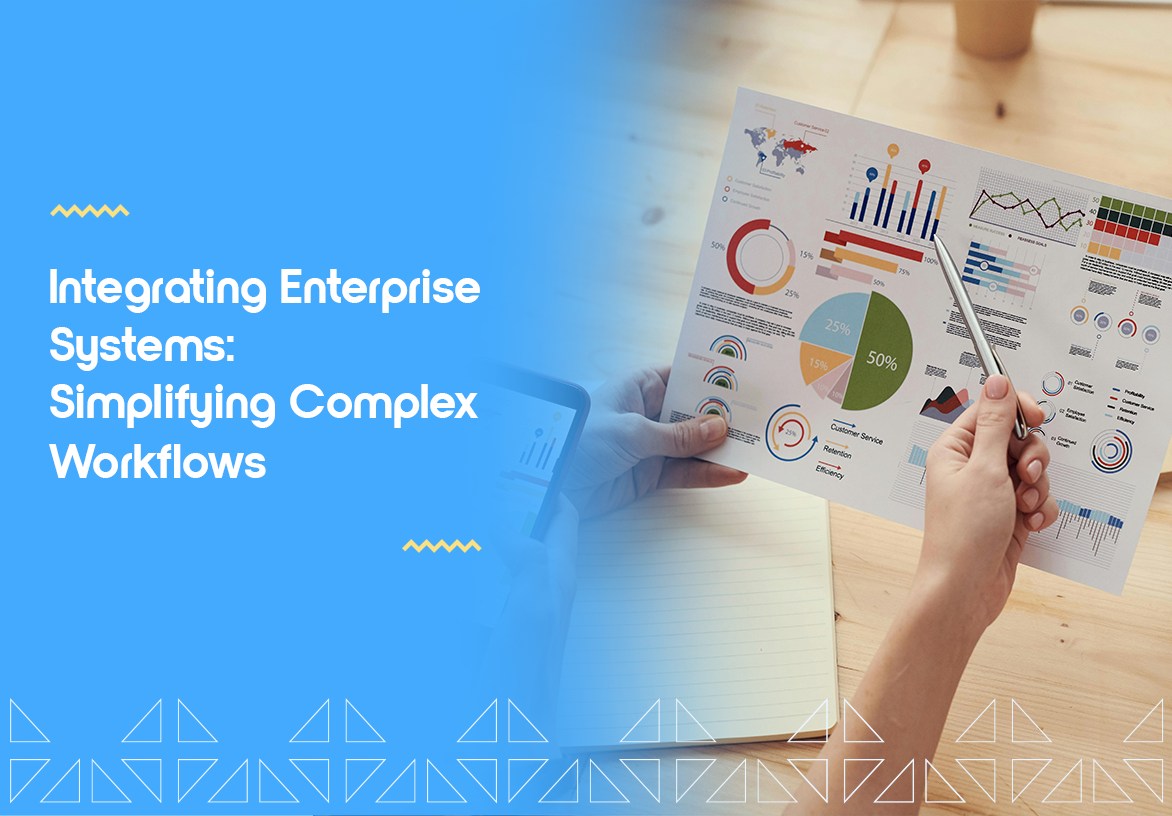Integrating Enterprise Systems: Simplifying Complex Workflows
Learn how system integration techniques simplify complex workflows for enterprises using multiple applications in Zcoderz's insightful guide.
Integrating Enterprise Systems: Simplifying Complex Workflows
It's common practice to utilize several tools and applications to finish jobs and projects; major enterprises, on average, use 175 applications per month, while medium-sized businesses use 73. However, managing a fleet of applications can be challenging due to their size and diversity, particularly when tools and applications are unconnected, incompatible, and unable to share data. At this juncture, system integration techniques come into action.
Let's see how integrating enterprise systems simplifies complex workflows with Zcoderz’s insightful guide.
What Is System Integration?
Systems integration is the connection between a company's physical, virtual, and application technologies. For some companies, the process is simple, for others extremely complex, depending on business needs, the number of applications, and the complexity of the existing infrastructure. Let's consider an average company of 30 – 40 people using Microsoft 365, Slack, Jira, and Salesforce. Thanks to system integration it is possible to ensure, for example, that the necessary documents are integrated into Microsoft and that Jira are published correctly in Slack. In recent years, the nature of systems integration has changed dramatically, especially with the proliferation of SAAS applications. If, in fact, ten years ago, system administrators were mainly concerned with the integration of on-premises servers, today, the integration process takes place almost entirely in the cloud. This presents many unique challenges for businesses, including the need to integrate distributed applications and data across multiple cloud environments and ensure the security of sensitive data.
Methods for Systems Integration
API integration
API stands for "Application Programming Interface" and is a set of definitions and protocols for building and integrating application software. It is also the most common tool for connecting different applications. There are public, private or partner APIs. They use a common language to define functions and protocols and provide applications with the ability to transfer data. It is a tool that, while on the one hand is highly flexible and available, on the other it is vendor dependent and requires adequate skills to manage.
Webhooks
Webhooks, also called HTTP callbacks, provide an automatic communication system between applications and are an alternative to APIs. There are two main differences between webhooks and APIs: first, webhooks do not require a code-based implementation; Second, they are event-based, unlike APIs which are request-based. This allows webhooks to work with real-time data. The downside of using webhooks is that, unlike APIs, they require applications to initiate data transfer based on an update.
Enterprise Service Bus (ESB)
An ESB acts as an intermediary between all service-to-service communications, separating the services and applications of an IT environment based on a service-oriented architecture. Each service configures only one integration with the ESB and the ESB makes this service available to all other services connected to it. This allows for easy integration of applications, services, and data, as well as greater flexibility in integrating third-party systems. However, implementing and managing an ESB can be complex and expensive and is not always the best option for integrating simpler applications.
Representational State Transfer (REST)
REST is a network architecture that enables and defines communication between systems via HTTP. An API that complies with REST principles is called a REST API. REST API integration refers to connecting with third-party applications via HTTP requests for data access and transmission. REST APIs have become increasingly popular in recent years, mainly due to features such as lightweight, scalability, flexibility, and independence. They are also efficient, and developers can implement them without using third-party tools.
Benefits of Workflow Automation in Business Processes
Workflow automation refers to the use of technology to automate manual tasks and streamline business processes. This can range from simple task automation, such as sending automated email notifications, to complex process automation, such as automating the entire order fulfillment process. The benefits of workflow automation in business processes are numerous:
Greater efficiency:
By automating repetitive tasks, employees can focus on higher value-added activities, resulting in increased productivity and efficiency.
Reduce errors:
Manual processes are prone to human error, which can be costly and time-consuming to correct. Automation minimizes the risk of errors and ensures consistency and accuracy in business processes.
Cost Savings:
Process automation can lead to significant cost savings by reducing the need for manual labor, eliminating paper-based processes, and minimizing errors that can lead to financial losses.
Improved Customer Experience: With faster and more streamlined processes, companies can provide better customer service and improve the overall customer experience.
Scalability:
As companies grow, manual processes can become increasingly complex and time-consuming. Workflow automation enables scalability and ensures that processes can handle larger volumes without compromising efficiency.
To Wrap Things Up
In summary, enterprise system integration streamlines complex workflows, addressing the challenges of managing diverse applications. Techniques such as API integration, webhooks, ESB, and REST facilitate seamless connections, promoting efficiency and scalability.
Workflow automation further enhances operations by reducing errors, cutting costs, and improving customer experiences. By embracing these strategies, businesses can stay agile and competitive in the digital era, driving innovation and sustainable growth.

